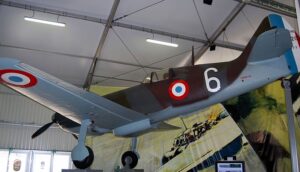Time Period: World War II
Country of Origin: Germany
Type: Fighter Aircraft (Night), Bomber Aircraft, Reconnaissance and Surveillance
Manufacturer: Dornier Flugzeugwerke
Dornier Do 217 Aircraft Overview
The Dornier Do 217 was a versatile and heavily armed twin-engine bomber aircraft used by the Luftwaffe during World War II. Designed and produced by the Dornier Flugzeugwerke company, the Do 217 was developed as a successor to the Do 17 and Do 215 bombers, incorporating improved performance, firepower, and range.
With its sleek and aerodynamic design, the Do 217 possessed excellent flight characteristics and was capable of carrying a significant bomb load over long distances. It featured a robust airframe and was powered by two powerful Daimler-Benz DB 601 or DB 603 engines, which provided the aircraft with impressive speed and altitude capabilities.
The Do 217 was utilized in various roles throughout the war, including strategic bombing, tactical bombing, maritime patrol, reconnaissance, and night fighting. Its versatility allowed it to adapt to different mission requirements, making it a valuable asset for the Luftwaffe.
In its bomber role, the Do 217 could carry a substantial payload of bombs, including high-explosive, incendiary, and anti-ship munitions. It was also equipped with defensive armament, including machine guns and cannon turrets, to fend off enemy fighters during bombing runs.
One notable variant of the Do 217 was the Do 217E, which was specifically designed for maritime patrol and anti-shipping missions. Equipped with radar and specialized anti-ship weaponry, such as torpedoes and glide bombs, the Do 217E played a significant role in the Battle of the Atlantic and other naval operations.
Another variant, the Do 217N, was adapted for night fighting duties. Equipped with radar and specialized night-fighting equipment, such as Schräge Musik upward-firing cannons, the Do 217N operated as a nocturnal interceptor, targeting Allied bombers under the cover of darkness.
Despite its capabilities, the Do 217 faced challenges later in the war due to Allied air superiority and advances in aircraft technology. Production of the aircraft ceased in 1944, with the Do 217 gradually being phased out of frontline service in favor of more advanced bombers.
Overall, the Dornier Do 217 was a versatile and capable aircraft that played a significant role in Luftwaffe operations during World War II. Its adaptability, firepower, and endurance made it a valuable asset in various theaters of the conflict, contributing to Germany’s aerial warfare efforts.
Dornier Do 217 M-1 Specifications
- Crew: 4
- Length: 17 m (55 ft 9 in)
- Wingspan: 19 m (62 ft 4 in)
- Height: 4.97 m (16 ft 4 in)
- Wing area: 57 m2 (610 sq ft)
- Empty weight: 9,065 kg (19,985 lb) * Empty equipped weight: 10,950 kg (24,140 lb)
- Max takeoff weight: 16,700 kg (36,817 lb)
- Fuel capacity: 2,960 L (780 US gal; 650 imp gal) in fuselage tank and four wing tanks
- Powerplant: 2 × Daimler-Benz DB 603A V-12 inverted liquid-cooled piston engines, 1,305 kW (1,750 hp) each for take-off. 1,379 kW (1,849 hp) at 2,100 m (6,900 ft)
- Propellers: 3-bladed VDM constant-speed propellers
Dornier Do 217 M-1 Performance
- Maximum speed: 475 km/h (295 mph, 256 kn) at sea level. 560 km/h (350 mph; 300 kn) at 5,700 m (18,700 ft)
- Cruise speed: 400 km/h (250 mph, 220 kn) at optimum altitude
- Range: 2,180 km (1,350 mi, 1,180 nmi) with maximum internal fuel
- Ferry range: 2,500 km (1,600 mi, 1,300 nmi) with auxiliary fuel tank
- Service ceiling: 9,500 m (31,200 ft) without bomb load. 7,370 m (24,180 ft) with maximum internal bomb load
- Rate of climb: 3.5 m/s (690 ft/min)
- Time to altitude: 1,000 m (3,300 ft) in 3 minutes 18 seconds. 2,000 m (6,600 ft) in 6 minutes 42 seconds
Dornier Do 217 M-1 Armament
- Guns:
-
- 2 × 7.92 mm (0.312 in) MG 81 machine gun with 500 rpg in the nose
- 2 × 7.92 mm (0.312 in) MG 81 machine gun with 750 rpg in lateral positions
- 1 × 13 mm (0.512 in) MG 131 machine gun with 500 rounds in ventral step
- 1 × 13 mm (0.512 in) MG 131 machine gun with 500 rounds in dorsal position
- Bombs: maximum bomb load 4,000 kg (8,800 lb) (2,520 kg (5,560 lb) internally)










